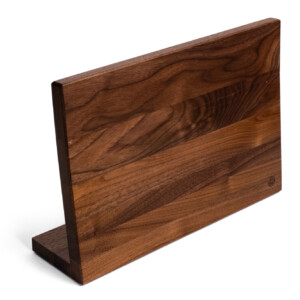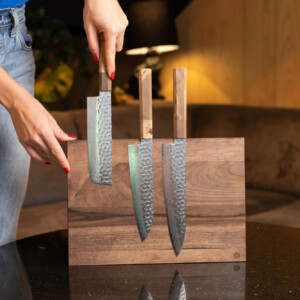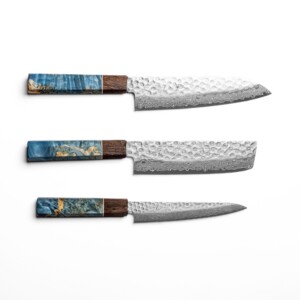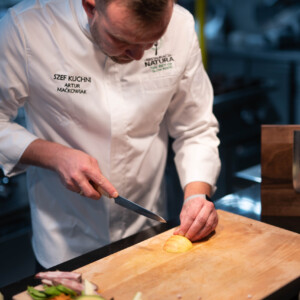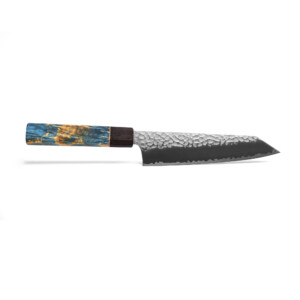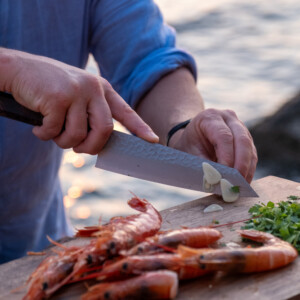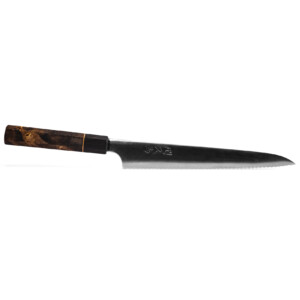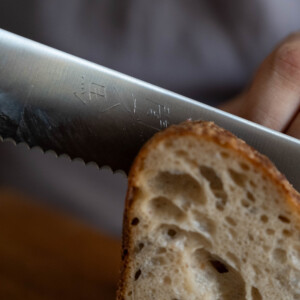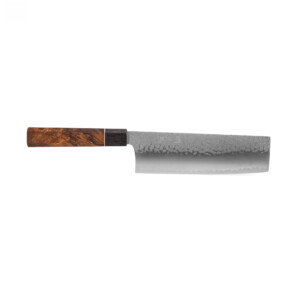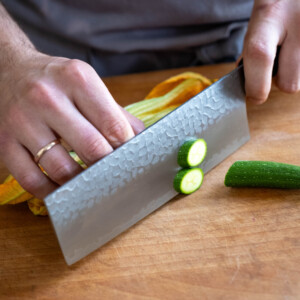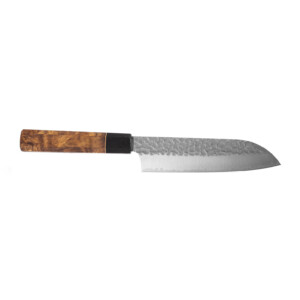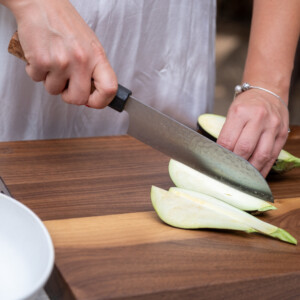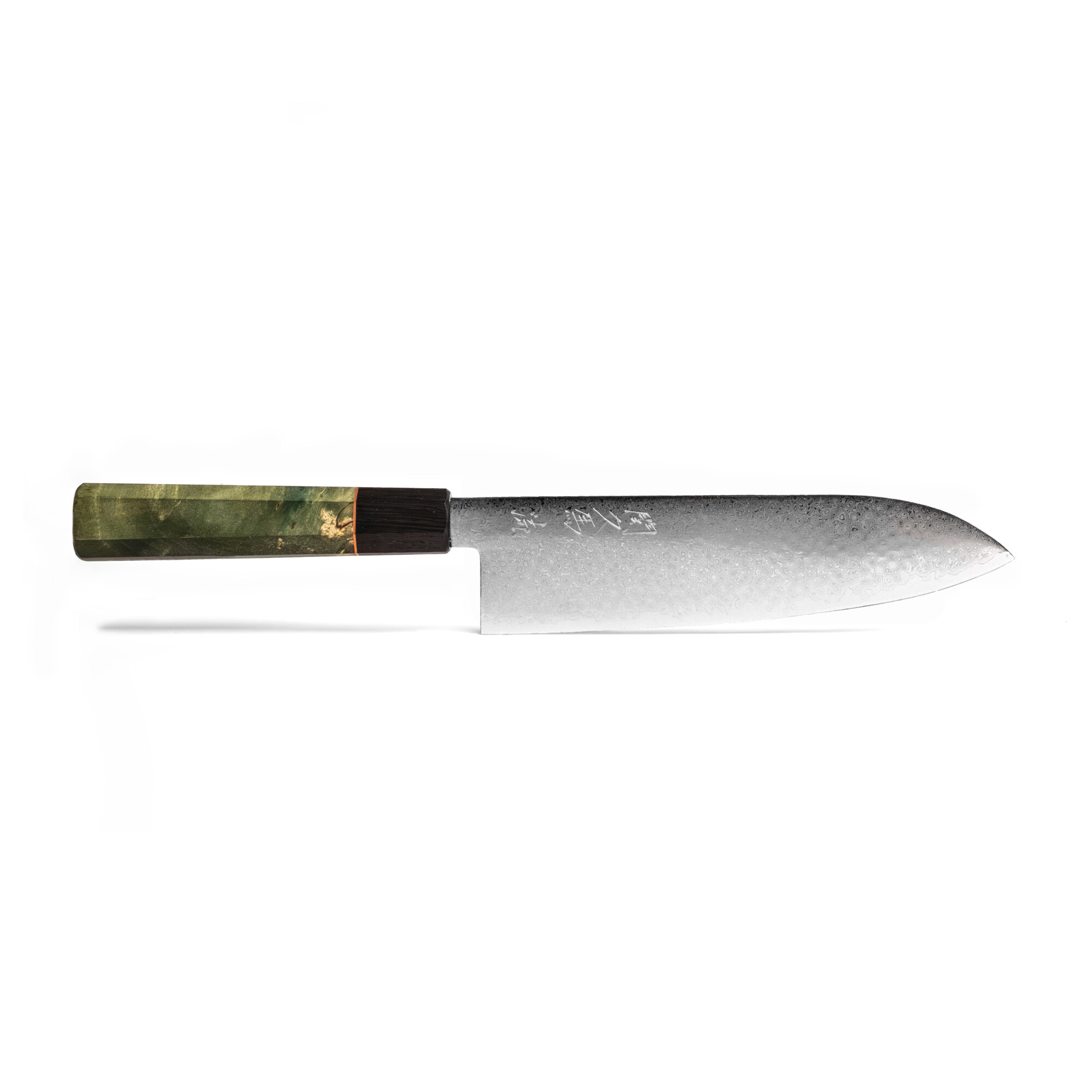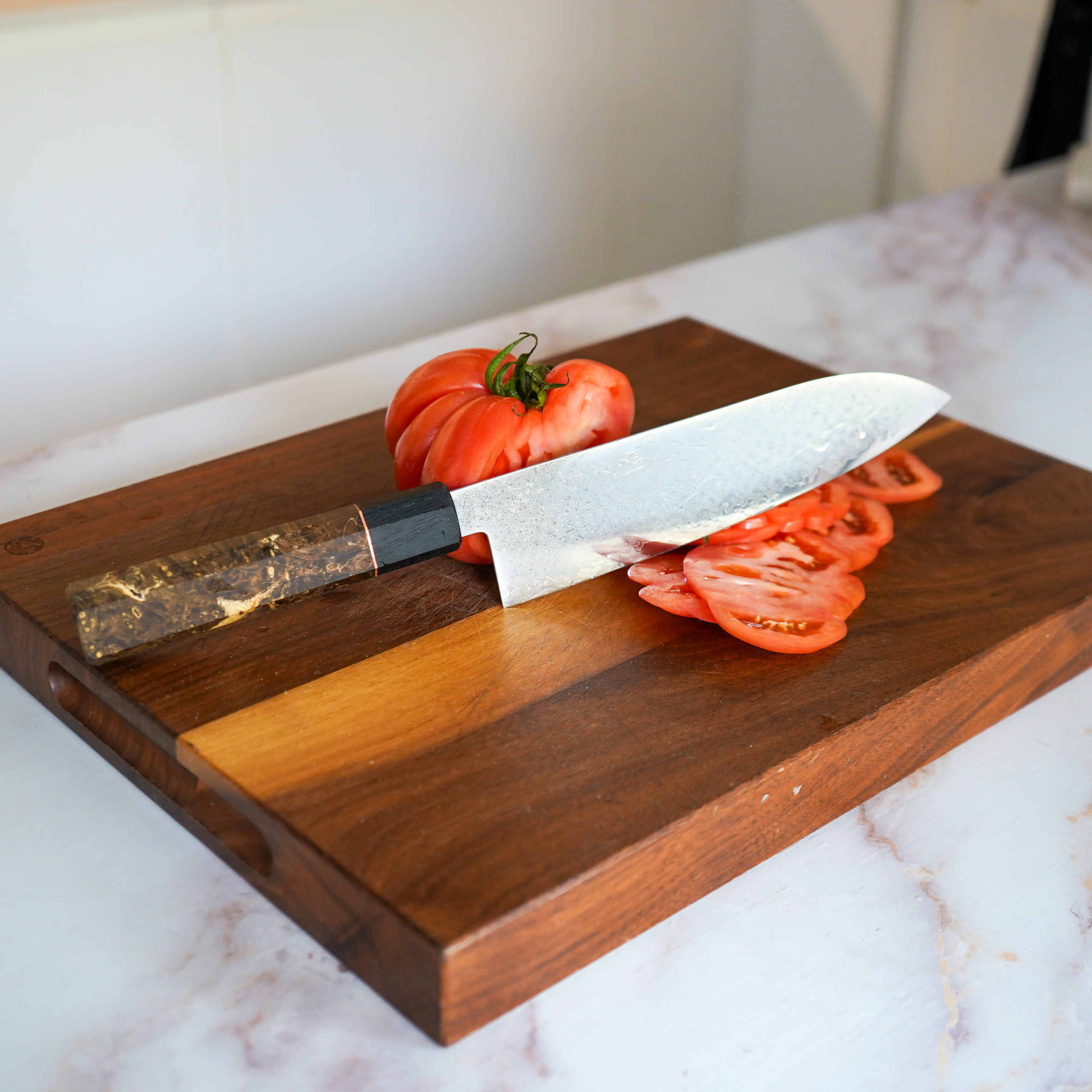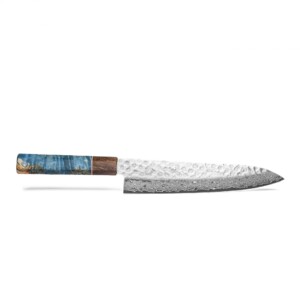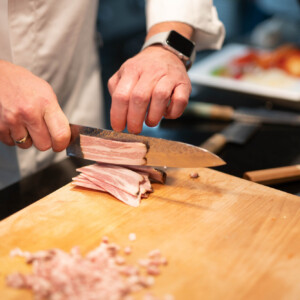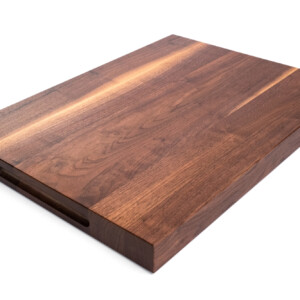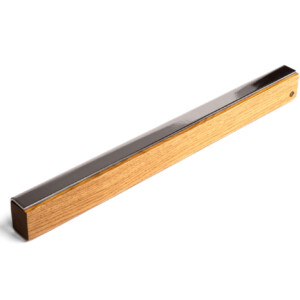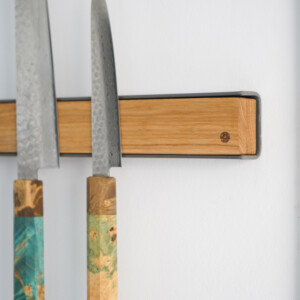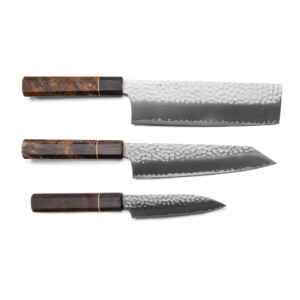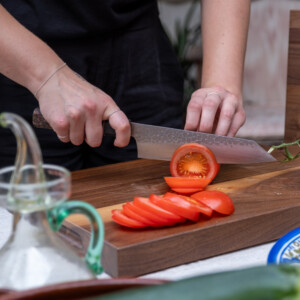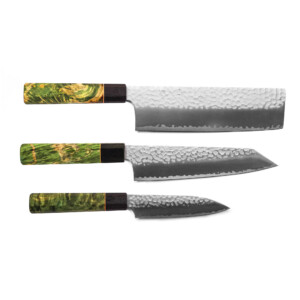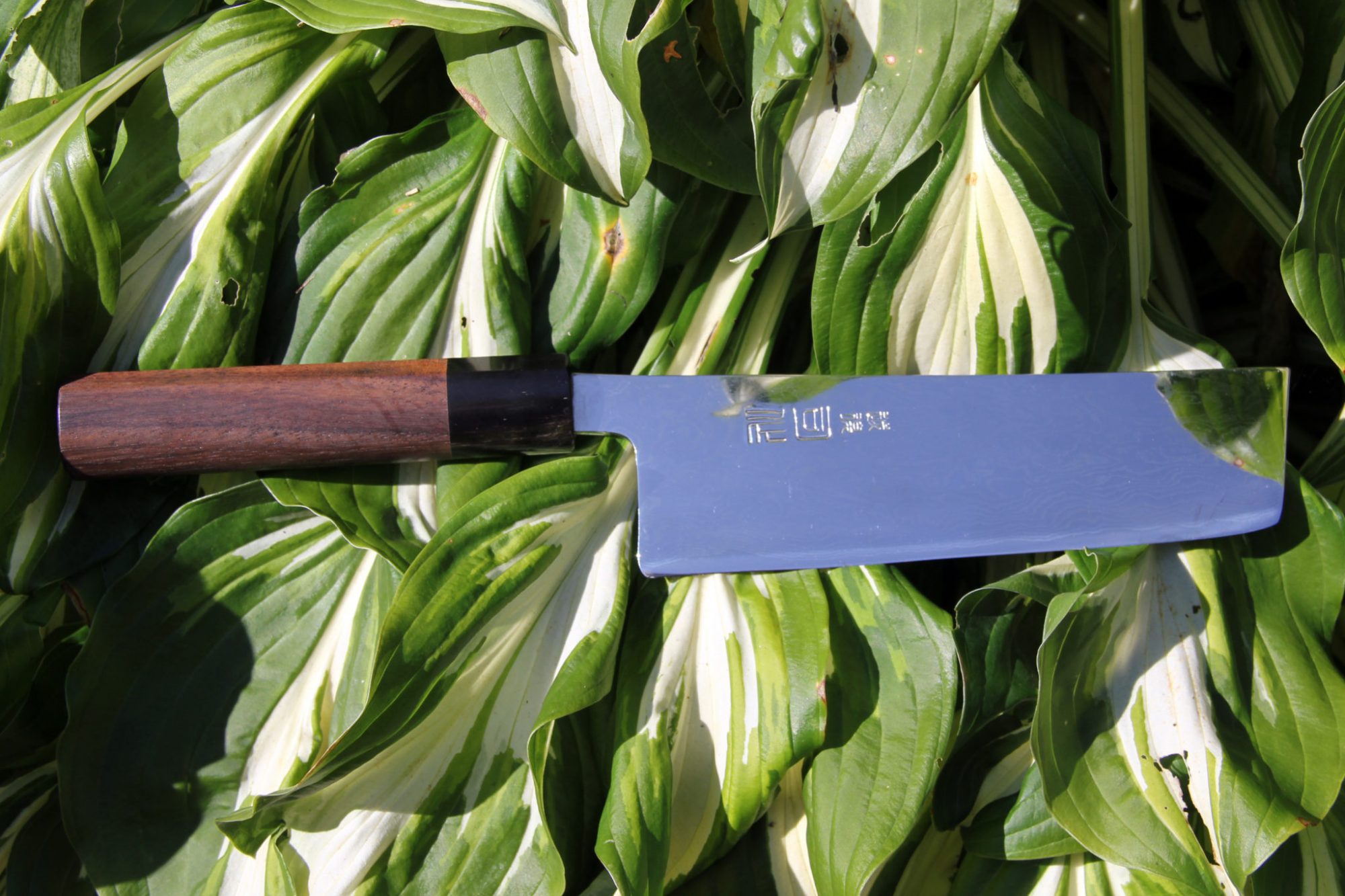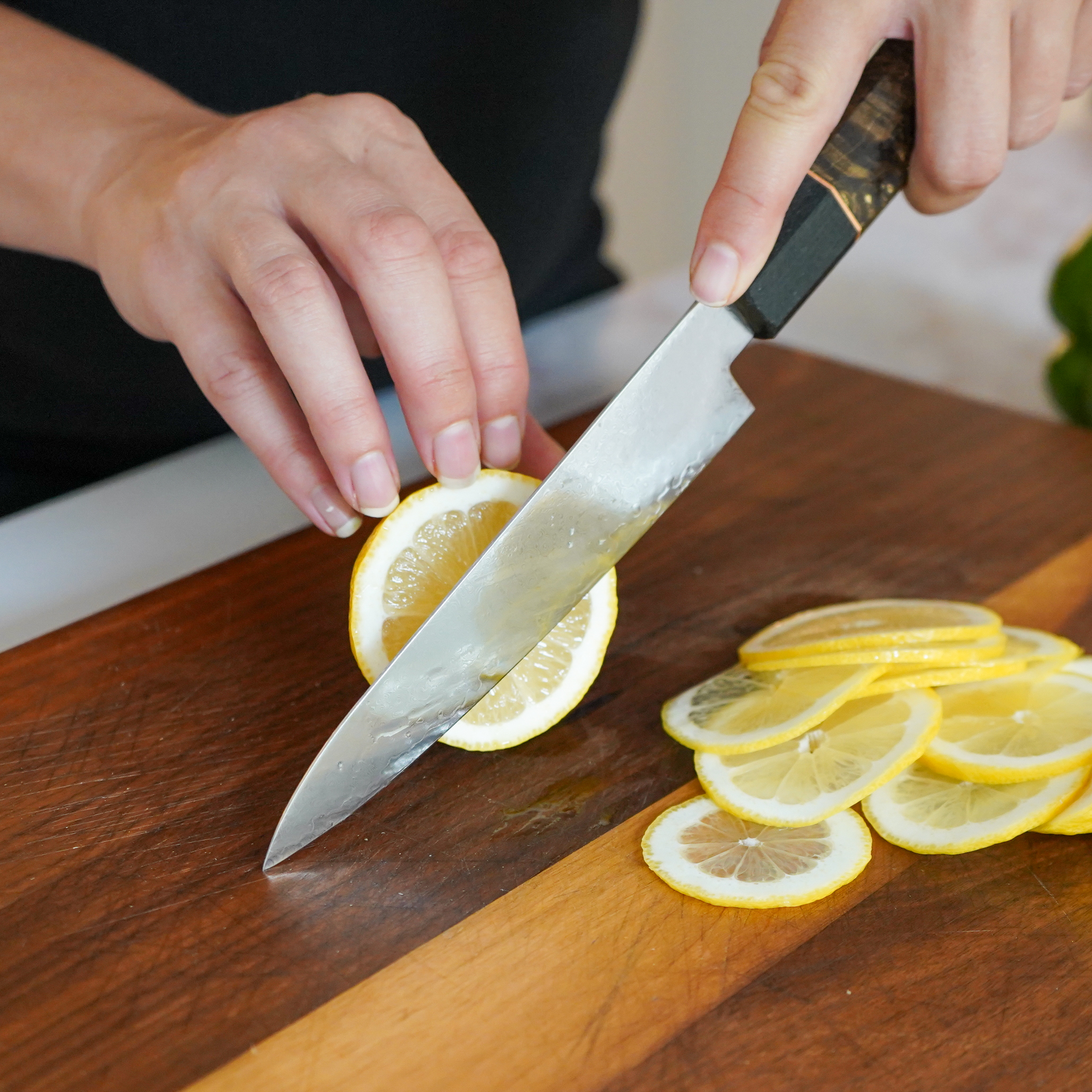Greetings, fellow knife enthusiasts and culinary connoisseurs! Today, we’re diving deep into the world of Japanese knife steels, specifically the enigmatic R2 and SG2 steels. As a proud purveyor of handmade Japanese kitchen knives, including our esteemed Seki Kyuba Pro line, we at Oishya are dedicated to shedding light on the intricacies of these high-performance materials.
The Backstory
Before we get into the nitty-gritty of R2 and SG2 steels, let’s take a quick journey through the annals of Japanese bladesmithing. For centuries, Japanese craftsmen have been renowned for their exceptional skill in forging legendary swords like the katana. These masters of metallurgy have since turned their attention to crafting kitchen knives that are sharper than a British wit and more precise than a Swiss timepiece.
Enter R2 and SG2 steels, two modern marvels that have taken the culinary world by storm. But here’s where things get a bit tricky: are these two steels actually the same, or are they as different as chalk and cheese? Let’s find out!
The Composition Conundrum
To unravel this mystery, we need to take a closer look at the chemical composition of these steels. R2 steel, also known as “Daido Steel R2,” is a powdered metallurgical stainless steel that boasts a high carbon content and a healthy dose of molybdenum and vanadium. This dynamic duo of alloying elements imbues R2 with exceptional wear resistance and the ability to hold an edge sharper than a razor-sharp retort.
SG2 steel, on the other hand, is a Japanese stainless steel that shares a similar chemical composition to R2. It’s like they’re fraternal twins, sharing the same DNA but with slight variations that make them unique. SG2 also contains high levels of carbon, molybdenum, and vanadium, giving it the same edge retention and durability properties as R2.
Now, here’s where the plot thickens like a well-reduced demi-glace. Some knife aficionados argue that R2 and SG2 are essentially the same steel, just marketed under different names. It’s like the steel industry’s version of a superhero’s secret identity!
However, others contend that there are subtle differences between the two steels, such as the exact proportions of alloying elements and the manufacturing processes employed. These nuances, they argue, can result in slight variations in performance, much like how two seemingly identical recipes can yield distinctly different dishes.
The Seki Kyuba Pro
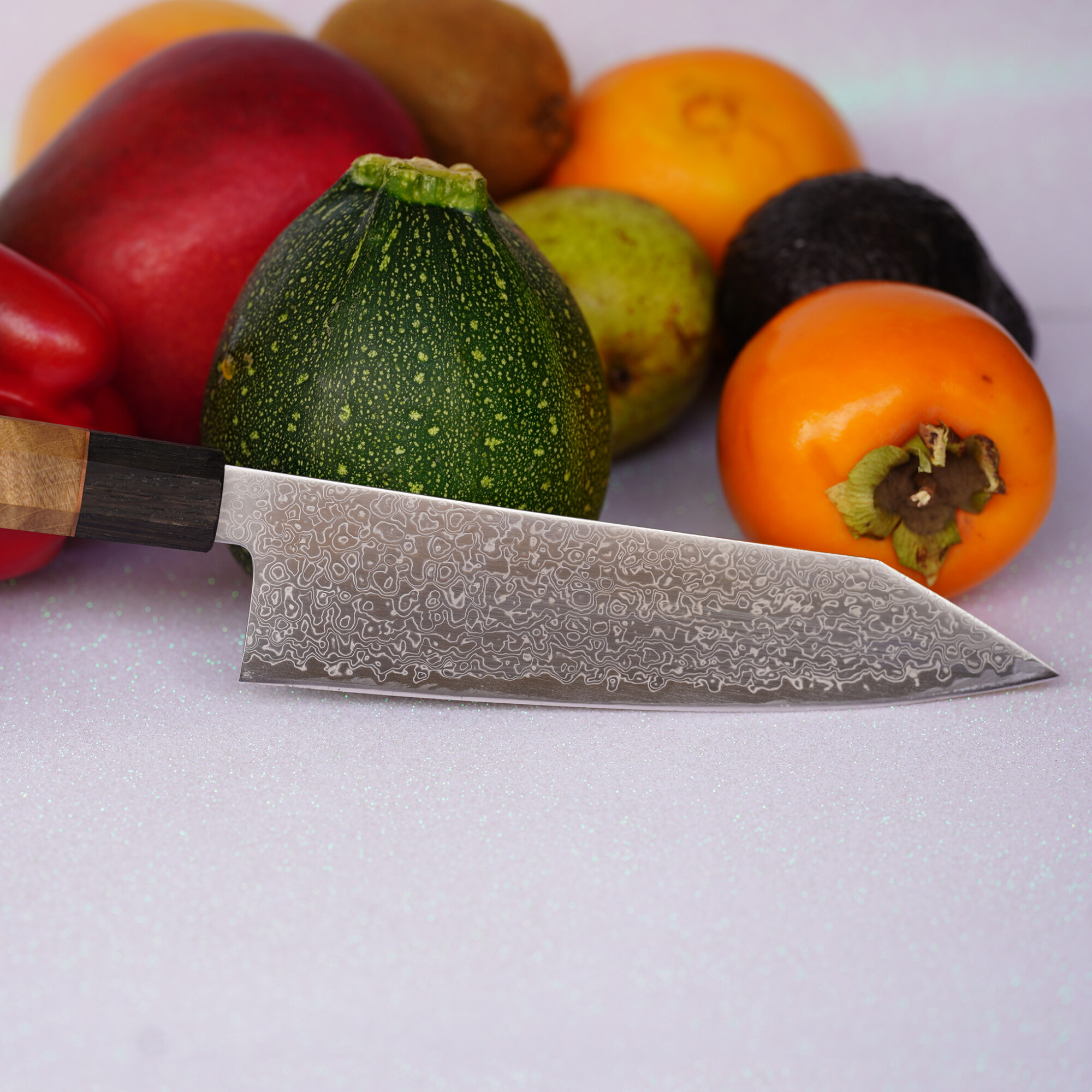
At Oishya, we take great pride in our Seki Kyuba Pro knives, which feature either R2 or SG2 steel, depending on the specific model. These steels are the unsung heroes of our blades, enabling them to maintain an edge that can slice through even the most challenging ingredients like a hot knife through butter.
But why did we choose R2 and SG2 for our Seki Kyuba Pro line? It’s simple: these steels offer the perfect balance of hardness, durability, and corrosion resistance. They’re like the Holy Trinity of knife steels, working in perfect harmony to create a blade that can withstand the rigours of a professional kitchen while still being easy to maintain.
The Verdict
So, are R2 and SG2 steels the same? The answer, our dear readers, is a resounding “sort of.” While they share many similarities in composition and performance, there are subtle differences that set them apart. It’s like comparing two classic British desserts: a Victoria sponge and a Battenberg cake. Both are delightful, both are quintessentially British, but each has its own unique charm.
At the end of the day, whether you choose an R2 or SG2 steel knife from our Seki Kyuba Pro line, you can rest assured that you’re getting a blade that is sharper than a Wildean quip and more reliable than the Queen’s guard. These steels are the backbone of our knives, the unsung heroes that enable you to create culinary masterpieces with ease and precision.
At Oishya, we’re committed to providing you with the best Japanese kitchen knives and accessories, all while keeping your budget in mind. Our Seki Kyuba Pro line, featuring R2 and SG2 steels, is a testament to our dedication to quality and affordability. So, whether you’re slicing, dicing, or julienning, remember that with an R2 or SG2 steel knife by your side, you’re not just cooking—you’re embarking on a culinary adventure. And with Oishya, you’ve got a faithful companion that will be with you every step of the way.
Happy cooking, and may your knives always be sharp and your wit even sharper!
